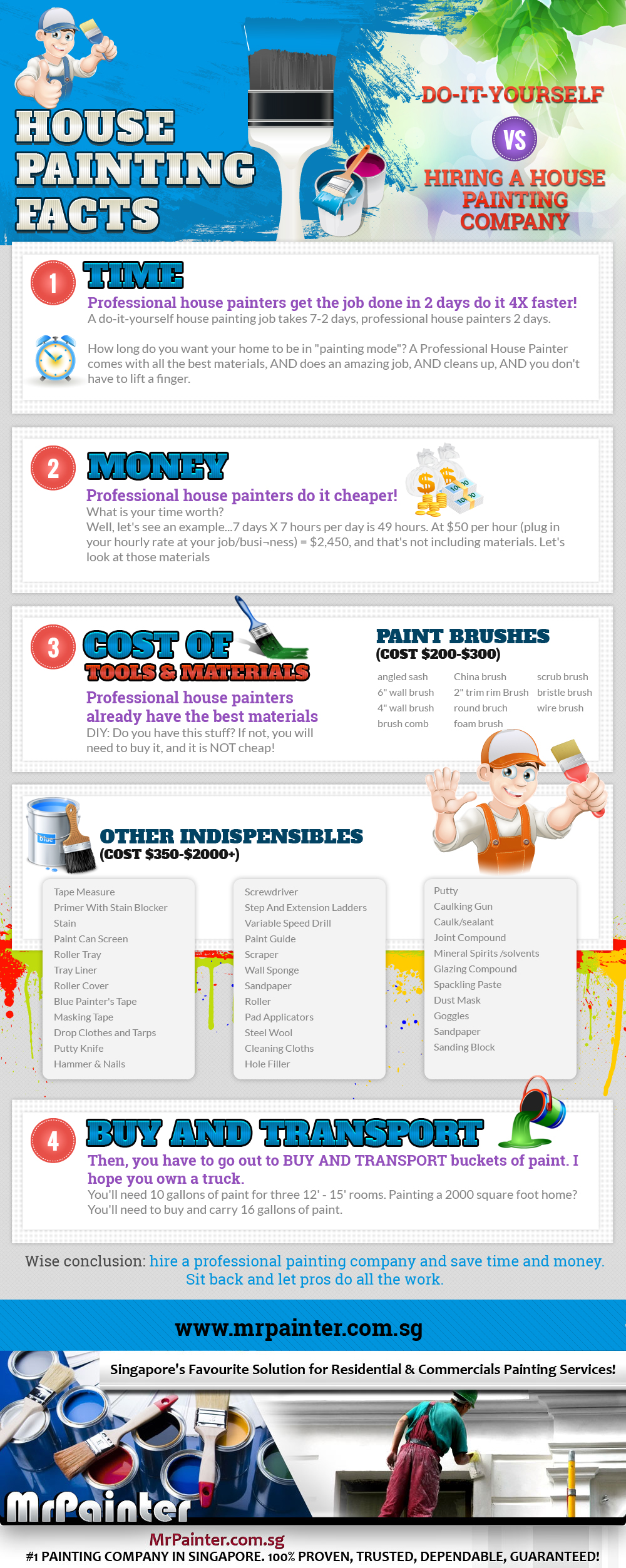The Effectiveness Of Your Industrial Exterior Paint Job Is Very Closely Connected To Climate Condition-- Learn Just How It Can Either Support Or Prevent Your Preferred Results
The Effectiveness Of Your Industrial Exterior Paint Job Is Very Closely Connected To Climate Condition-- Learn Just How It Can Either Support Or Prevent Your Preferred Results
Blog Article
Author-MacKinnon Stiles
When you're planning a business outside paint project, do not take too lightly the influence of climate on your outcomes. You require to think about aspects like temperature, humidity, and precipitation, as they can make or damage your paint work. For example, did you know that optimal problems ask for particular temperature level arrays and moisture degrees? Failing to keep track of these facets can lead to unequal finishes or perhaps damages to fresh paint. Comprehending these aspects is vital to achieving a durable, expert outcome. So, what details weather should you watch out for?
Temperature level Considerations
When it comes to commercial exterior paint, temperature level plays an important function in the result of your job. If you're painting in extreme heat, the paint can dry too quickly, leading to issues like inadequate attachment and uneven surfaces. You want to aim for temperatures in between 50 ° F and 85 ° F for the best outcomes. Below 50 ° F, paint might not heal correctly, while above 85 ° F, you take the chance of blistering and cracking.
Timing your job with the right temperatures is vital. Start your job early in the morning or later in the afternoon when it's cooler, especially throughout warm months.
Also, take into consideration the surface temperature level; it can be dramatically greater than the air temperature level, particularly on bright days. Utilize a surface thermostat to check this before you start.
If temperature levels are unpredictable, watch on the weather prediction. Sudden temperature level declines or warm front can thwart your plans. You don't intend to start painting just to have the conditions change mid-project.
Moisture Levels
Moisture degrees dramatically influence the success of your industrial exterior paint task. When the humidity is too high, it can hinder paint drying out and curing, bring about a range of problems like poor adhesion and complete quality.
If you're planning a task throughout wet problems, you could discover that the paint takes longer to dry, which can prolong your task timeline and increase prices.
Alternatively, reduced same day painters portland oregon can likewise position obstacles. https://www.express.co.uk/life-style/property/1611941/Interior-design-tips-painting-mistakes-avoid-preparation-paint-finish-The-Paint-Shed may dry out too swiftly, avoiding appropriate application and resulting in an uneven coating.
You'll intend to monitor the humidity degrees carefully to guarantee you're working within the excellent variety, typically between 40% and 70%.
To get the very best outcomes, consider using a hygrometer to determine moisture prior to beginning your task.
If you discover the levels are outside the optimum array, you may require to change your schedule or select paints created for variable problems.
Always speak with https://exteriorhousepaintersnear45555.blogmazing.com/32452139/trick-insights-from-painting-contractors-what-you-should-recognize for specific suggestions on humidity tolerance.
Rainfall Impact
Rainfall or snow can significantly interrupt your business exterior painting strategies. When rainfall takes place, it can get rid of newly used paint or produce an uneven coating. Preferably, you want to choose days with completely dry climate to ensure the paint adheres correctly and cures properly. If you're captured in a rain shower, it's ideal to halt the job and wait on problems to boost.
In addition, snow can be much more detrimental. Not just does it create a wet surface area, yet it can also lower temperature levels, making it tough for paint to dry. This can lead to concerns like peeling or blistering down the line.
It's crucial to examine the weather forecast prior to beginning your task. If rain or snow is predicted, think about rescheduling.
Always keep in mind to allow appropriate drying out time in between layers, specifically if the weather remains unpredictable.
Final thought
Finally, watching on the weather is essential for a successful commercial exterior painting task. By monitoring temperature, humidity, and precipitation, you can ensure the best conditions for application and curing. Keep in mind to plan your job around desirable weather condition and always adhere to supplier standards. With the ideal method, you'll attain a durable, beautiful finish that can endure the elements. Don't let the weather condition capture you off-guard-- remain informed and paint wise!
